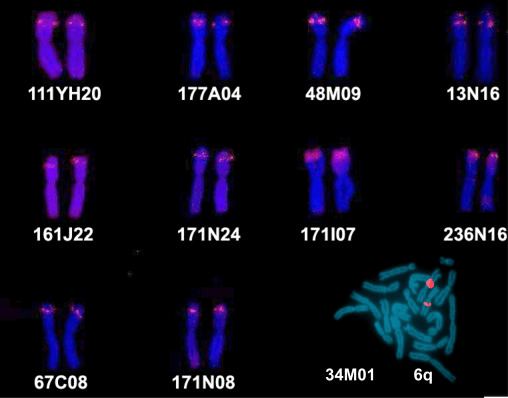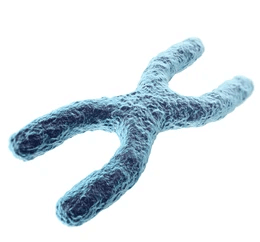BAC-FISH Services
Creative Bioarray has many project experience in fluorescent in situ hybridization (FISH) testing using probes constructed from bacterial artificial chromosomes (BAC). Our DNA FISH experimental platform can successfully provide one-stop analysis and testing services from probe construction. Our BAC chromosome construction is completed by experimenters with rich experimental experience, providing you with the perfect solution for DNA FISH. We have established a mature protocol and can provide you with experimental reports and result from analysis reports according to your requirements.
BAC Library and DNA FISH
Modern fluorescence in situ hybridization (FISH) originated from the traditional radioisotope-labeled probe in situ hybridization (ISH). This is due to the safety shortcomings of radioisotopes and the restrictive environment in which experiments are carried out. Makes nucleic acid analysis by in situ hybridization technology safe and quantitative detection of many targets. Eukaryotic DNA is highly organized in the nucleus, and this organization is important for genome function.
DNA fluorescence in situ hybridization (DNA-FISH) allows three-dimensional visualization of individual gene loci, subchromosomal domains and even entire chromosomes at all stages of the cell cycle. BAC can be used to maintain the insertion of DNA fragments of hundreds of kb. The popularity of the BAC method as a probe in cytogenetic analysis or for generating high-resolution physical maps and preparing DNA sequencing templates can be attributed to their relative stability and ease of handling, and the size ratio of the larger DNA insert to the vector.
 Fig 1. Mapping of selected BAC clones using FISH on metaphase chromosomes. (Spirhanzlova P, et al. 2017)
Fig 1. Mapping of selected BAC clones using FISH on metaphase chromosomes. (Spirhanzlova P, et al. 2017)
Services
The main content of our DNA denaturation FISH services includes BAC pool construction, chromosome preparation, probe labeling, sample pretreatment, hybridization of probes with target sequences of experimental materials, and detection of hybridization results. The main content of our DNA denaturation FISH service includes BAC pool construction, chromosome preparation, probe labeling, sample pretreatment, hybridization of probes with target sequences of experimental materials, and detection of hybridization results. You only need to communicate with our experimental team about the target to be tested or upload the sequence and then mail the sample to us. Our laboratory will complete all subsequent analysis steps for you.
| BAC Library Construction | According to customer needs, we use the BAC method to clone the chromosome fragments of interest into BAC to construct DNA-FISH probes and provide the final quality inspection report. |
| Chromosome Preparation | Use our protocol for metaphase chromosome preparation. |
| Probe Labeling | The probe is labeled with a fluorescent dye. |
| Sample Pretreatment | Carry out quality testing on samples delivered by customers to improve the accuracy of experiments. |
| Sample Hybridization | Mix the probe with the target for hybridization, and finally perform probe detection (capture the image using a fluorescence microscope). |
| Result Analysis | Use appropriate software to analyze the data and give a data analysis report. |

Our Features
Creative Bioarray provides a variety of technical service options from BAC pool construction to harvesting of FISH data. We will work with you to find the best solution, you will benefit from our technical expertise and complete platform, and save costs.
 | The BAC method has a larger insert size (>100 kb), which is suitable for large-segment whole-genome scanning; |
| It can be used to detect genetic problems such as chromosome rearrangement, aneuploidy and DNA deletion; |
| Please communicate with us before the sample is delivered, our customer service will tell you the best way to deal with it; |
If you are interested in our FISH service using probes constructed by the BAC method, please contact us for cooperation. We look forward to cooperating with you in the near future.
References
- Spirhanzlova P, Dhorne-Pollet S, Fellah J S, et al. Construction and characterization of a BAC library for functional genomics in Xenopus tropicalis[J]. Developmental biology, 2017, 426(2): 255-260.
- Roohi J, Cammer M, Montagna C, et al. An improved method for generating BAC DNA suitable for FISH[J]. Cytogenetic and genome research, 2008, 121(1): 7-9.
- Gelali E, Girelli G, Matsumoto M, et al. iFISH is a publically available resource enabling versatile DNA FISH to study genome architecture[J]. Nature communications, 2019, 10(1): 1-15.
All products and services on this website are only suitable for non-medical purposes.


 Fig 1. Mapping of selected BAC clones using FISH on metaphase chromosomes. (Spirhanzlova P, et al. 2017)
Fig 1. Mapping of selected BAC clones using FISH on metaphase chromosomes. (Spirhanzlova P, et al. 2017)




